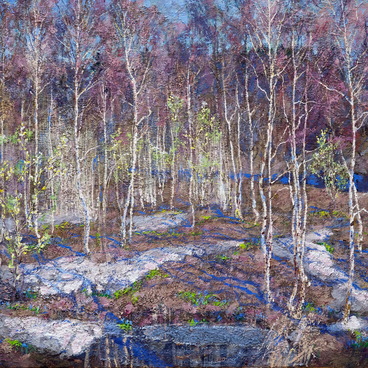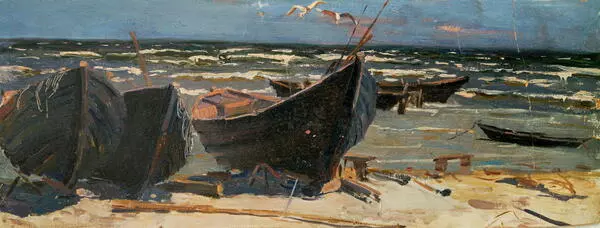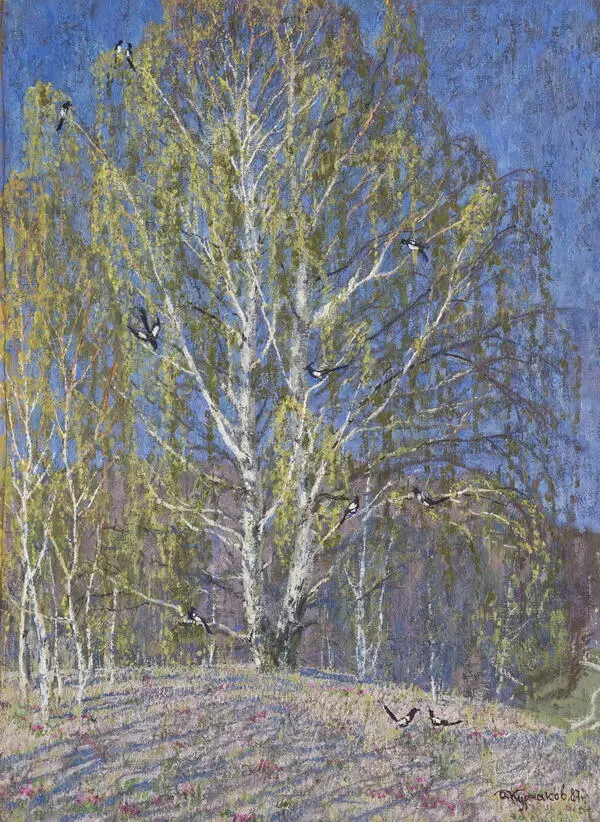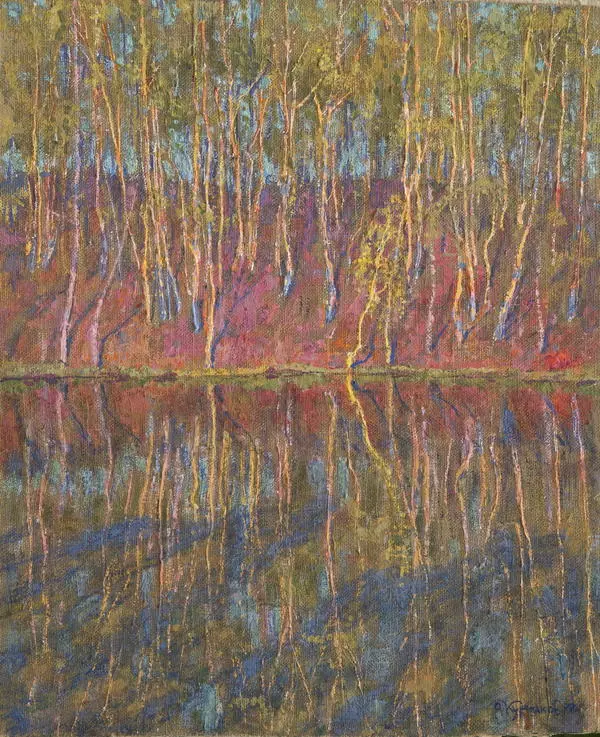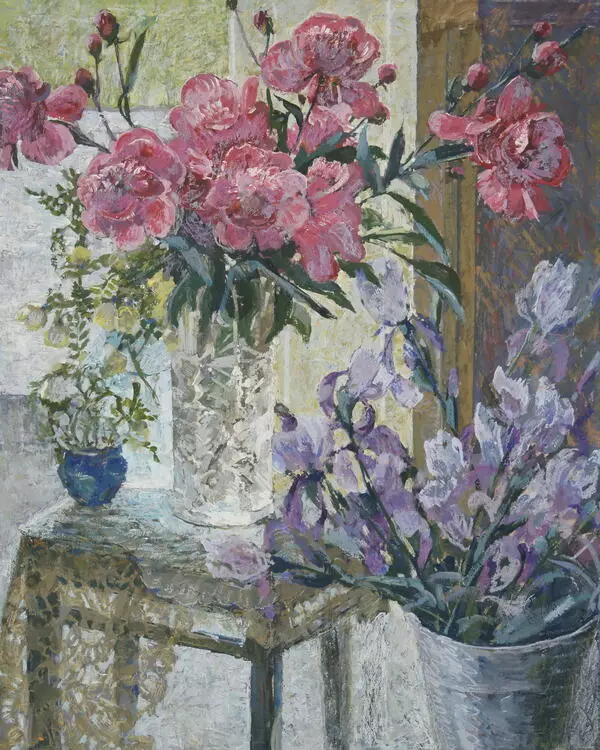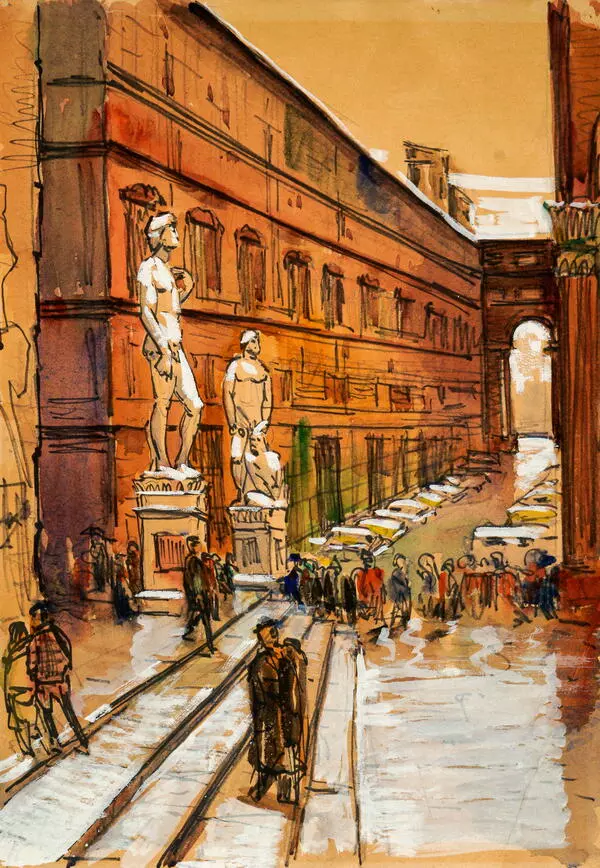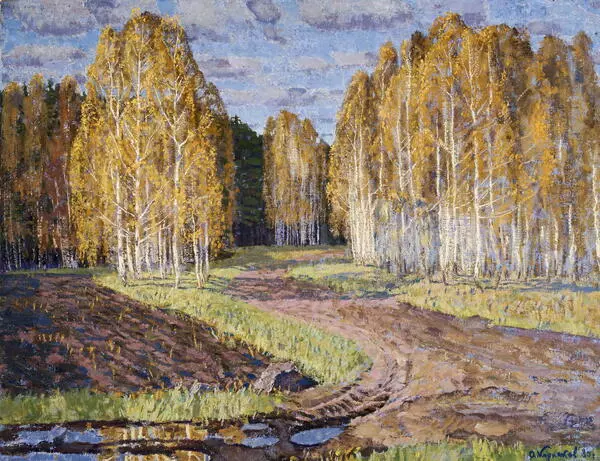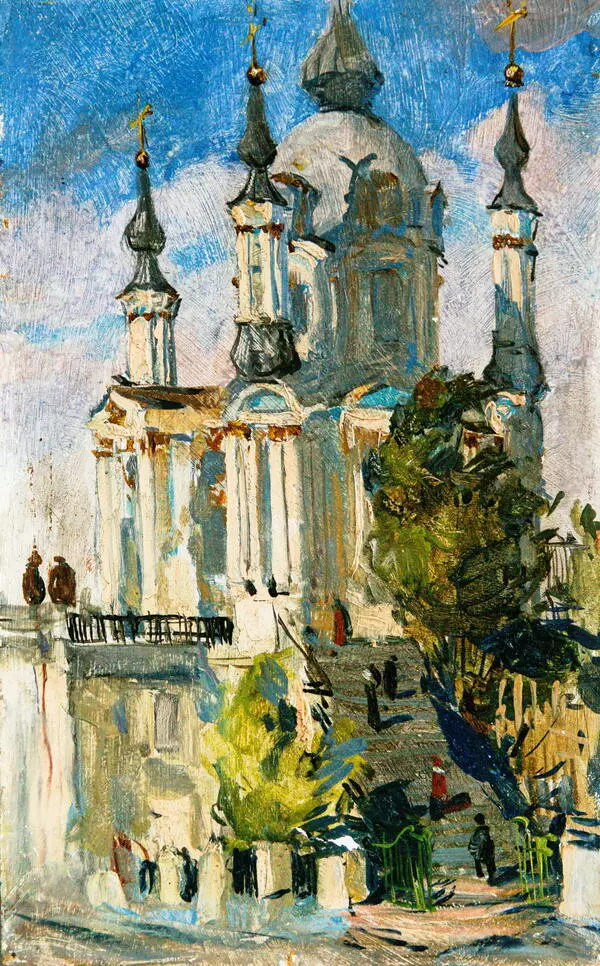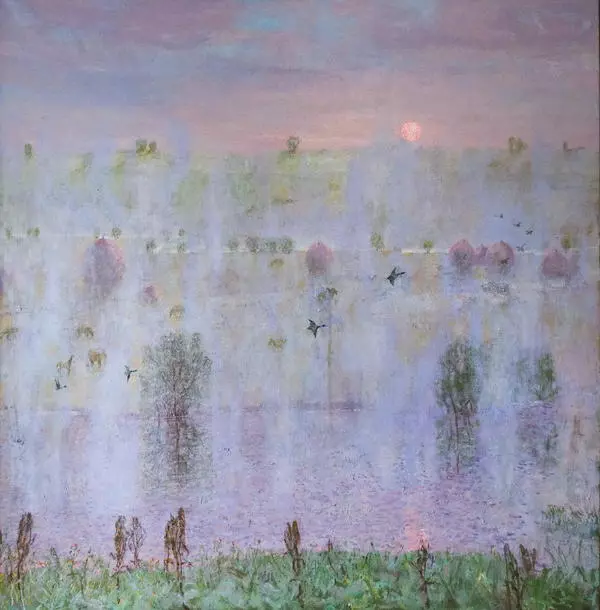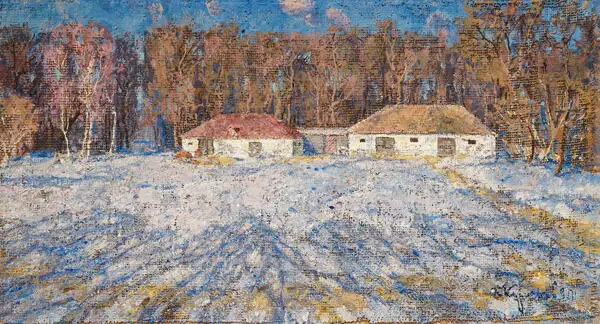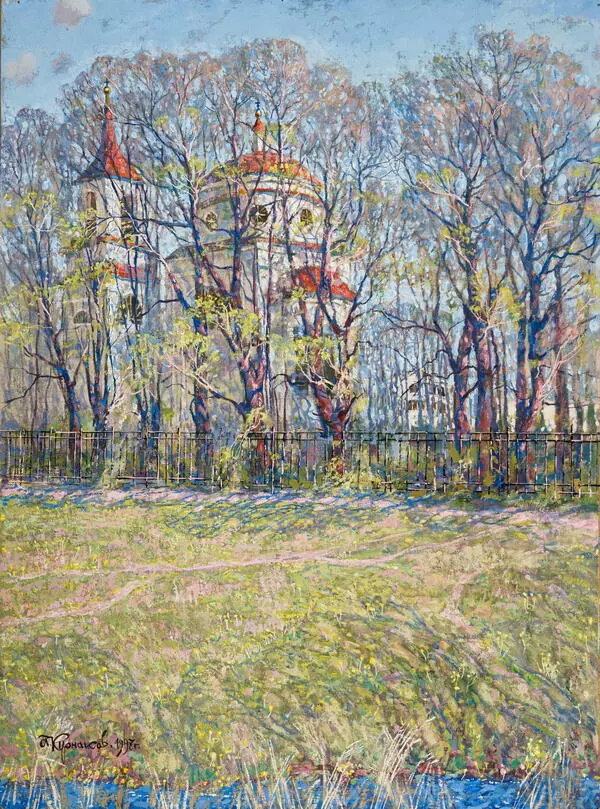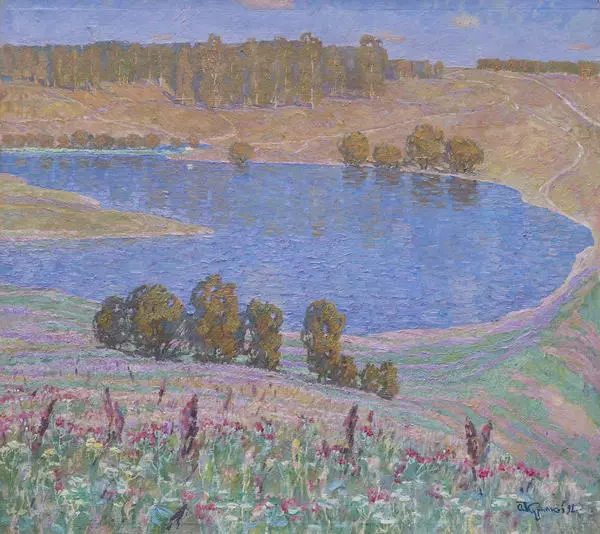Landscape depicting early spring. In the foreground is an overflowing river with floating ice floes and groups of white birches standing in the water. Their curved trunks stand out from the general blue background and seem to emphasize the feeling of chills from cold melt water in their frozen movement.
The spring highwater filled the coastal area. The artist rhythmically repeats the thrill of water and emphasizes it by depicting trees and their reflections. The interweaving of dark and light trunks in the river visually resembles lace. This effect is also enhanced by the blending of complex color spots, accentuated by the colorful texture of shimmering highlights on the rippling water.
On the left is a part of the gently sloping bank, covered with greenish shoots of the first grass breaking through the brown ground, free of snow. Slightly below the center is the image of birds with black and white plumage, one flying and one sitting on a branch, which gives the landscape a sense of the awakening life of the wood’s tenants.
The middle ground shows the opposite bank with tall trees, on the tops of which, as on other trees and bushes, the first shoots are about to sprout. This can be seen in the pinkish color of young lush branches. The tree trunks are dark and contrast with the white light curved birches. In the background there is a strip of wood along the skyline. Behind it is a blue sky with light clouds, designated, like a forest, conventionally, in comparison with the details of the foreground drawn with a thin brush: twigs, birds, water. The blue color is the most varied in the picture: the water and the sky are full of shades from dark blue to almost white.
The composition has a high perspective. The viewer’s attention is drawn to the water, and the combination of bluish-green color creates a poetic mood. Widely painted in a free manner, the landscape space and the abundance of details create their own unique beauty. The picture is balanced and attractive, it is painted with pure colors, giving it transparency and fragility. A literary work by Ivan Sergeevich Turgenev is named ‘The Torrents of Spring’. Andrei Ilyich was inspired by his fellow countryman’s oeuvre and repeatedly made trips to Turgenev’s places.
The spring highwater filled the coastal area. The artist rhythmically repeats the thrill of water and emphasizes it by depicting trees and their reflections. The interweaving of dark and light trunks in the river visually resembles lace. This effect is also enhanced by the blending of complex color spots, accentuated by the colorful texture of shimmering highlights on the rippling water.
On the left is a part of the gently sloping bank, covered with greenish shoots of the first grass breaking through the brown ground, free of snow. Slightly below the center is the image of birds with black and white plumage, one flying and one sitting on a branch, which gives the landscape a sense of the awakening life of the wood’s tenants.
The middle ground shows the opposite bank with tall trees, on the tops of which, as on other trees and bushes, the first shoots are about to sprout. This can be seen in the pinkish color of young lush branches. The tree trunks are dark and contrast with the white light curved birches. In the background there is a strip of wood along the skyline. Behind it is a blue sky with light clouds, designated, like a forest, conventionally, in comparison with the details of the foreground drawn with a thin brush: twigs, birds, water. The blue color is the most varied in the picture: the water and the sky are full of shades from dark blue to almost white.
The composition has a high perspective. The viewer’s attention is drawn to the water, and the combination of bluish-green color creates a poetic mood. Widely painted in a free manner, the landscape space and the abundance of details create their own unique beauty. The picture is balanced and attractive, it is painted with pure colors, giving it transparency and fragility. A literary work by Ivan Sergeevich Turgenev is named ‘The Torrents of Spring’. Andrei Ilyich was inspired by his fellow countryman’s oeuvre and repeatedly made trips to Turgenev’s places.

